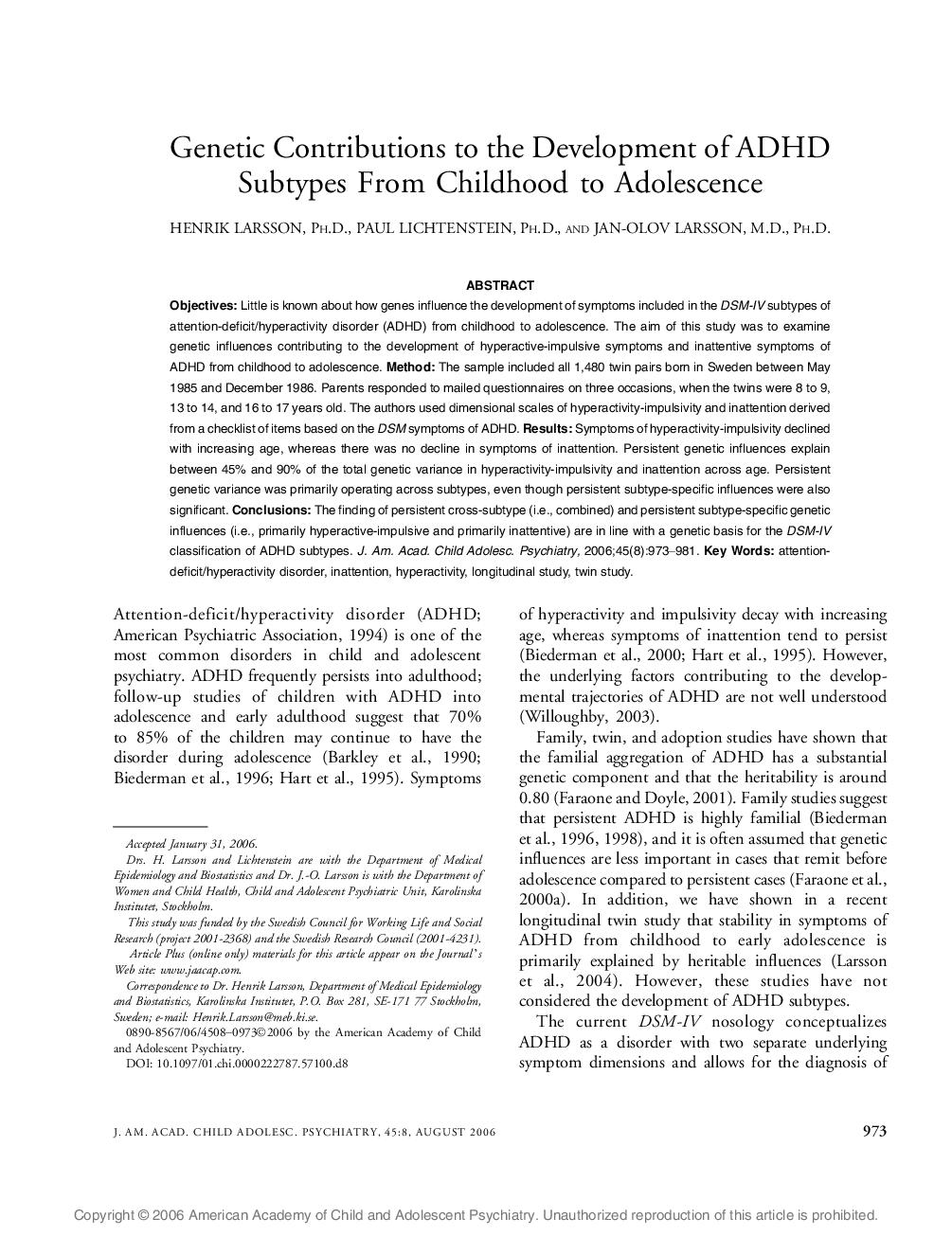| Article ID | Journal | Published Year | Pages | File Type |
|---|---|---|---|---|
| 326064 | Journal of the American Academy of Child & Adolescent Psychiatry | 2006 | 9 Pages |
ABSTRACTObjectives:Little is known about how genes influence the development of symptoms included in the DSM-IV subtypes of attention-deficit/hyperactivity disorder (ADHD) from childhood to adolescence. The aim of this study was to examine genetic influences contributing to the development of hyperactive-impulsive symptoms and inattentive symptoms of ADHD from childhood to adolescence.Method:The sample included all 1,480 twin pairs born in Sweden between May 1985 and December 1986. Parents responded to mailed questionnaires on three occasions, when the twins were 8 to 9, 13 to 14, and 16 to 17 years old. The authors used dimensional scales of hyperactivity-impulsivity and inattention derived from a checklist of items based on the DSM symptoms of ADHD.Results:Symptoms of hyperactivity-impulsivity declined with increasing age, whereas there was no decline in symptoms of inattention. Persistent genetic influences explain between 45% and 90% of the total genetic variance in hyperactivity-impulsivity and inattention across age. Persistent genetic variance was primarily operating across subtypes, even though persistent subtype-specific influences were also significant.Conclusions:The finding of persistent cross-subtype (i.e., combined) and persistent subtype-specific genetic influences (i.e., primarily hyperactive-impulsive and primarily inattentive) are in line with a genetic basis for the DSM-IV classification of ADHD subtypes.
